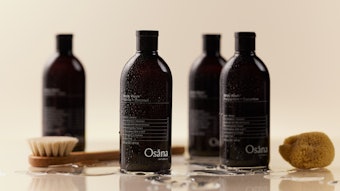- In 2013, for the first time ever, consumers in emerging markets will collectively spend more on bath and body care products than consumers in developed markets.
- A drop off in Latin American spending will put a big dent in the global growth curve for bath and body care—requiring new business generated in other markets to offset it.
- During the next 10 years, some of the fastest growing markets for bath and body care will be in the frontier markets of Africa and the Middle East.
- Upbeat sales of bath and body care products in the U.S. in 2013 are cause for optimism, and a signal that the developed markets still present plenty of growth opportunities.
- Men’s bath and body care brands are identified as a key growth opportunity globally, driven by a more overt male pampering culture in the U.S., Germany and the U.K.
- To attract new consumers, there is likely to be increased investment in tailored and multifunctional products.
The value of the global bath and body care market will reach $55 billion by the end of 2013, an increase of approximately 7% over 2012 (at fixed U.S. dollar prices), according to Euromonitor International. This will be the category’s strongest performance in more than a decade, reflecting rapidly rising sales in the emerging markets—in particular, India and Brazil—and a significant uptick in the U.S.
In 2013, for the first time ever, consumers in emerging markets will collectively spend more on bath and body care products than consumers in developed markets. It is indicative of a pendulum shift in global consumption that is visible across the beauty and personal care industry. A decade ago, developed markets accounted for nearly 70% of worldwide bath and body care sales.
Challenges Ahead in Key Growth Markets
Bath and body care brands cannot rely on emerging markets to bail out lackluster performances in developed markets into the long term, however—an issue facing all beauty and personal care categories. The problem is consumer confidence in a number of the most important growth markets is coming under downward pressure. For example, concerns over rising inflation and frozen wages are forcing growing numbers of middle-class Brazilians to buy staples in bulk at low-price, cash-and-carry stores known as atacarejos (a hybrid retail-wholesale channel). This is illustrative of a more cash-strapped shopping culture.
Over the last five years, Latin America as a whole accounted for more than a third of absolute global growth in bath and body care, yet all the key regional drivers—including Brazil, Argentina and Venezuela—are in a state of economic flux that is driving down consumer confidence. Even Mexico, where middle-class confidence was resurgent at the start of 2013, has seen a rapid deceleration of retail spending confidence in late summer/early autumn 2013.
A drop off in Latin American spending will put a big dent in the global growth curve for bath and body care—requiring new business generated in other markets to offset it. It is important to keep in mind that Latin America’s emerging middle-class has grown used to luxury trappings such as cars, mobile phones and broadband Internet. Consumers are unlikely to forgo those products easily, but something has to give if household cash flow is tight. Mid-market beauty brands therefore look vulnerable. Unilever’s Dove, for example, which is positioned about a third more expensive than economy soaps, could become a victim of trading down activity.
Segmentation and Multitasking
To sustain high global growth rates, brands in the bath and body care category will have to channel more investment into driving up business in Western Europe where, over the last five years, average annual growth in bath and body care spending has been less than 2%. Lessons can be learned from the makeup and hair care categories, where segmentation and multifunctionality have proven highly successful.
Oils, moisturizers and leave-in conditioners are increasingly visible in hair care, for example, while BB creams multitask as skin toners, moisturizers, primers, illuminators, foundation creams and sunscreens—all in one tiny package. Anti-aging products have been a big hit in skin care, too, and are a potential target of new product development for bath and shower care brands.
The launch of Nivea’s in-shower moisturizer in early 2013 could be a sign of things to come. Nivea brand owner Beiersdorf has thrown down the gauntlet to Unilever, which is normally the category’s innovation trailblazer. Body wash/shower gel is where we are most likely to see new multifunctional products in the year ahead.
Spreading Risk
The uncertain macro-economic climate across Latin America, a lynchpin of growth in bath and body care, shows just how fast things can change in emerging and developing markets. It is a warning that multinationals need to spread risk.
Over the next 10 years, some of the fastest growing markets for bath and body care will be in the frontier markets such as Africa and the Middle East. Building new positions in markets off the beaten path—even though some, such as Iran, present quite high risk—could yield attractive returns into the long term.
It is not that sales of bath and body care products are necessarily about to tank in Latin America, but margins could start to get much tighter as discounts and promotional activity grow in importance, especially in supermarkets—which are themselves under threat from discounters and cash-and-carry chains.
Growth in Male Pampering Culture
Upbeat sales of bath and body care products in the U.S. in 2013 are cause for optimism, and a signal that the developed markets still present plenty of growth opportunities. Body wash/shower gel products have been the star performers, driven by Dove, Suave, and the men’s brands Old Spice and Gillette.
Men’s bath and body care brands are identified as a key growth opportunity globally, driven by a more overt male pampering culture in the U.S., Germany and the U.K. There has also been significant growth in male beauty care spending in India and China. In India’s first-tier cities in particular, men are becoming more and more beauty-conscious. In 2012, sales of bath and body care products in India grew by 15%, with men fueling a big share of the spending. India’s market is characterized by youthfulness—the median age is 26. There is also a mushrooming and economically empowered middle class with an appetite for global brands. Multinational retailers from Ikea to Gap are sizing up big new expansion drives in the country, and upwardly mobile young men are widely identified as the key target of new business. India has its own economic worries—not the least of which is a rapidly devaluing rupee—but it is an exciting opportunity for all categories of fashion, beauty and personal care.
More Cross-category Colonization
Few can doubt the importance of the emerging middle class in the future, but what seems abundantly clear is that the bath and body care category needs to recruit new consumers in developed markets in order to dilute some of the growth pressures from emerging markets. This has become a critical strategic challenge.
To attract new consumers, there is likely to be increased investment in tailored and multifunctional products. Baby boomers seem obvious targets, given their growing contribution to both the size of the population and the size of this segment’s retail expenditure.
This will lead, of course, to even greater cross-category convergence across the beauty and personal care industry. Indeed, the merging of categories is developing into the defining trend of the current decade. And at its core is multifunctionality—the new strategic mantra.
For the Euromonitor International analysis of the deodorant category, read “A Rockier Road Ahead for Booming Deodorants Category.”
Rob Walker, senior fast-moving consumer goods analyst, Euromonitor International, can be contacted at [email protected].










